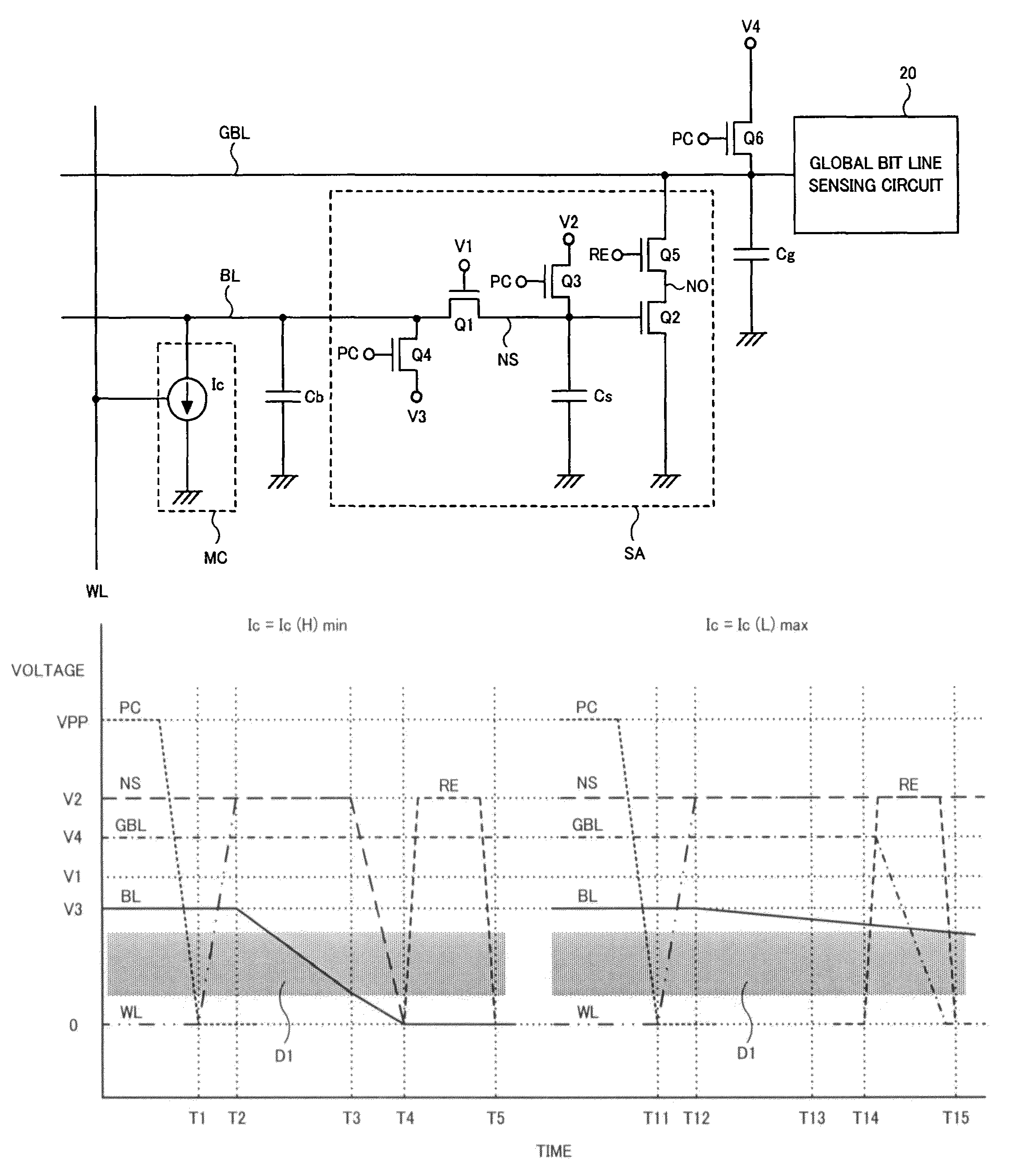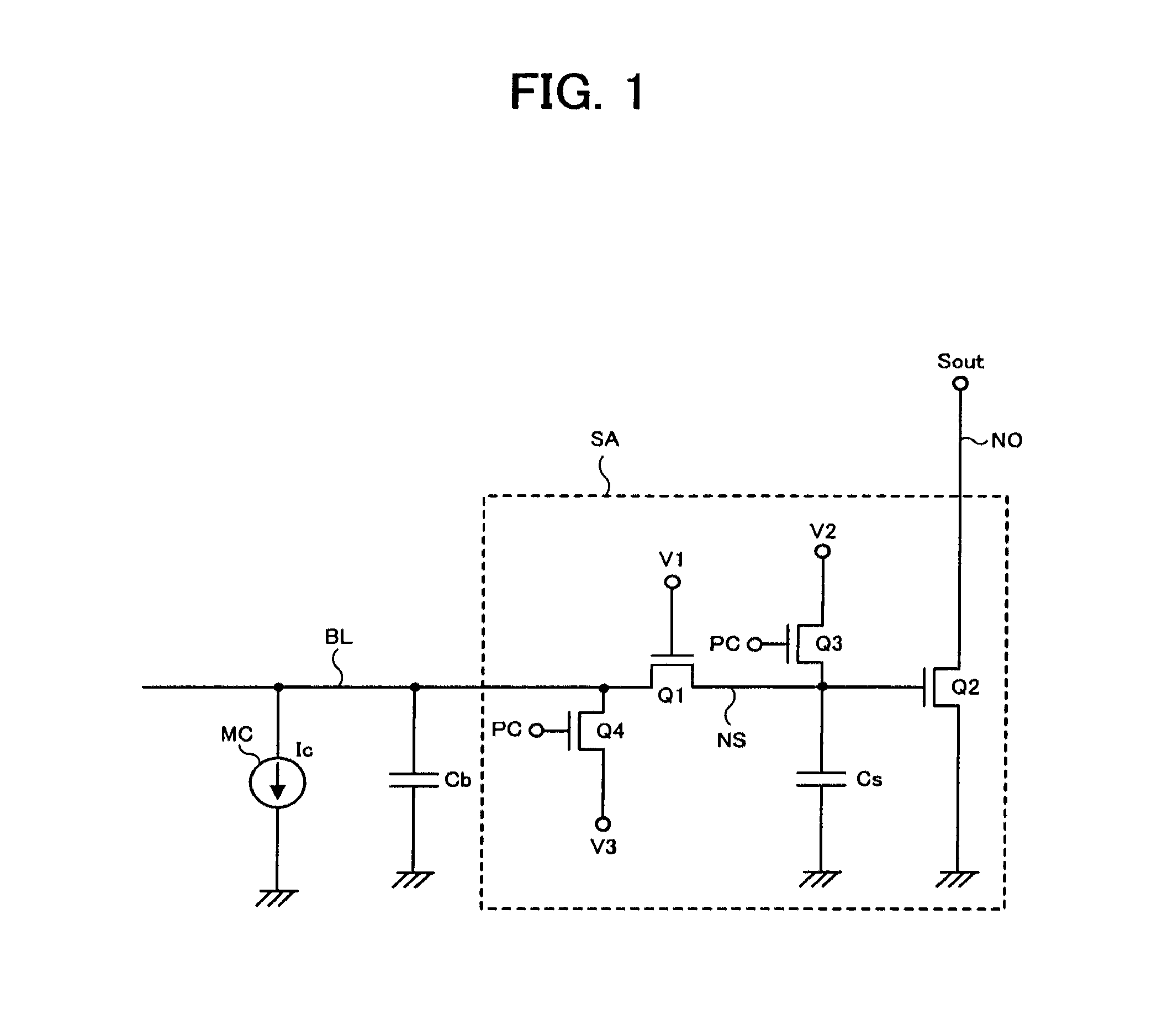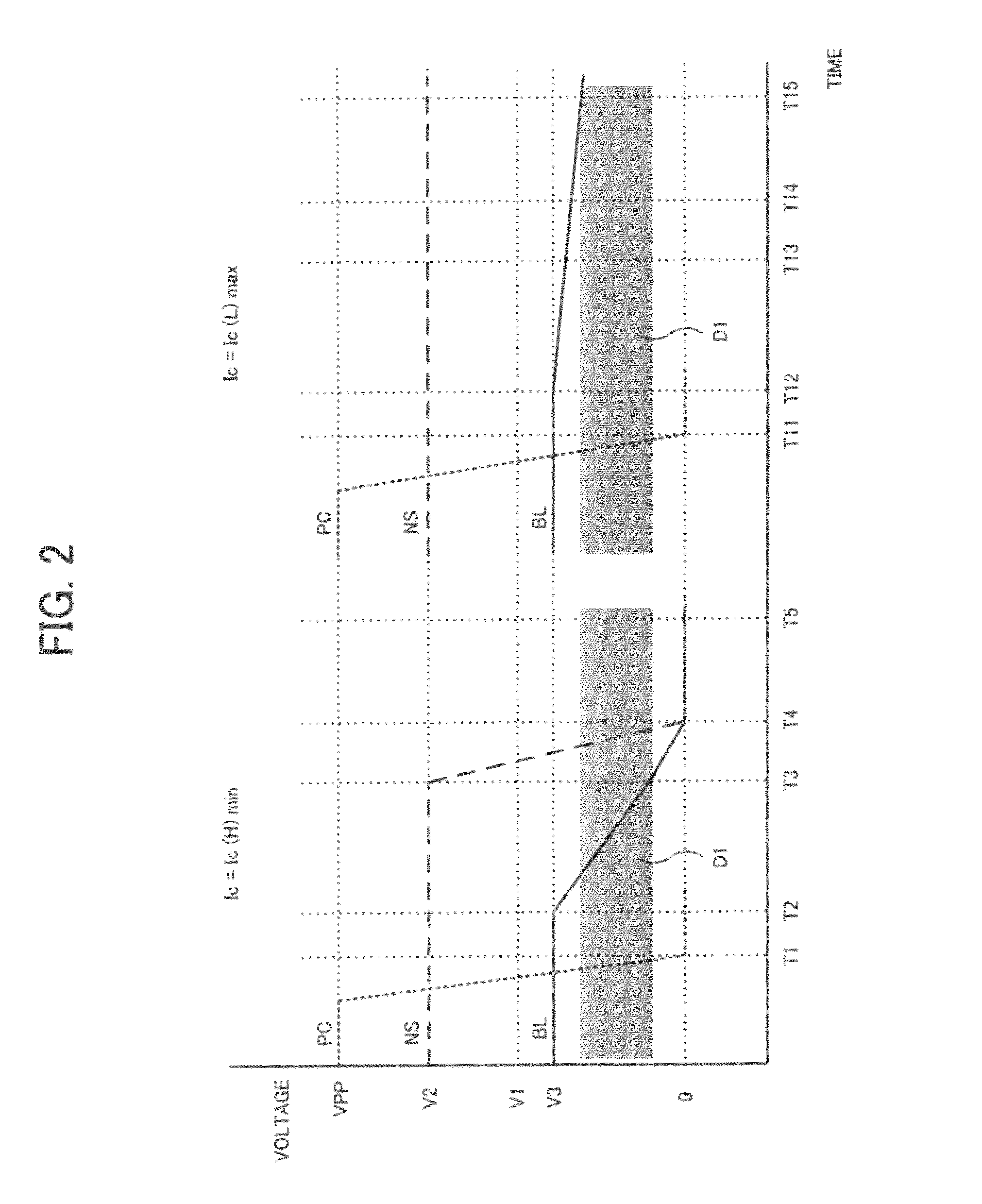Semiconductor device having current change memory cell
a memory cell and semiconductor technology, applied in the direction of digital storage, electrical analogue stores, instruments, etc., can solve the problems of reducing the speed with which the sense amplifier drives the global bit line, the inability to achieve a semiconductor device capable of high-speed read operation, and the inability to achieve high-speed read operation. , to achieve the effect of maintaining the potential of the sense node, and suppressing an increase in area
- Summary
- Abstract
- Description
- Claims
- Application Information
AI Technical Summary
Benefits of technology
Problems solved by technology
Method used
Image
Examples
first embodiment
[0041]In a first embodiment, the invention is applied to a semiconductor device having current change memory cells, which comprises a memory cell array having a hierarchical bit line structure. FIG. 3 is a block diagram showing an entire configuration of the semiconductor device of the first embodiment. The semiconductor device shown in FIG. 3 comprises a memory cell array 10 including a large number of current change memory cells MC arranged at intersections of a plurality of word lines WL and a plurality of bit lines BL, and row circuits 11 and column circuits 12 that are attached to the memory cell array 10. The row circuits 11 includes a large number of circuits provided corresponding to the plurality of word lines WL, and the column circuits 12 includes a large number of circuits provided corresponding to the plurality of bit lines BL. In addition, since the memory cell array 10 employs the hierarchical bit line structure, the bit lines BL are hierarchized into global bit lines...
second embodiment
[0060]In a second embodiment, the invention is applied to a semiconductor device comprising a memory cell array having the hierarchical bit line structure, similarly as in the first embodiment. However, the second embodiment is different from the first embodiment in that potential control for the sense amplifier SA is modified. Here, the entire configuration of the semiconductor device of the first embodiment (FIG. 3) is common to the second embodiment, so description thereof will be omitted. FIG. 9 shows a configuration example in a range including the sense amplifier SA and the memory cell MC in the semiconductor device of the second embodiment. In the semiconductor device of FIG. 9, it is different from FIG. 4 of the first embodiment in that a transfer control voltage CT is applied to the gate terminal of the transistor Q1 instead of the potential V1. The transfer control voltage CT is set to either the potential V1 or the ground potential by the voltage control circuit 18a, as d...
third embodiment
[0066]In a third embodiment, the invention is applied to a semiconductor device comprising a memory cell array having the hierarchical bit line structure, similarly as in the first embodiment. However, a configuration of the third embodiment is partially modified from that of the first embodiment. Here, the entire configuration of the semiconductor device of the first embodiment (FIG. 3) is common to the third embodiment, so description thereof will be omitted. FIG. 11 shows a configuration example in a range including the sense amplifier SA and the memory cell MC in the semiconductor device of the third embodiment. In the semiconductor device of FIG. 11, it is different from FIG. 4 of the first embodiment in that an NMOS type transistor Q7 is added to the sense amplifier SA and that the global bit line sensing circuit 20 is replaced with a global bit line sensing / writing circuit 21.
[0067]The transistor Q7 for write control has a gate terminal to which a write control signal WE is a...
PUM
 Login to View More
Login to View More Abstract
Description
Claims
Application Information
 Login to View More
Login to View More - R&D
- Intellectual Property
- Life Sciences
- Materials
- Tech Scout
- Unparalleled Data Quality
- Higher Quality Content
- 60% Fewer Hallucinations
Browse by: Latest US Patents, China's latest patents, Technical Efficacy Thesaurus, Application Domain, Technology Topic, Popular Technical Reports.
© 2025 PatSnap. All rights reserved.Legal|Privacy policy|Modern Slavery Act Transparency Statement|Sitemap|About US| Contact US: help@patsnap.com



